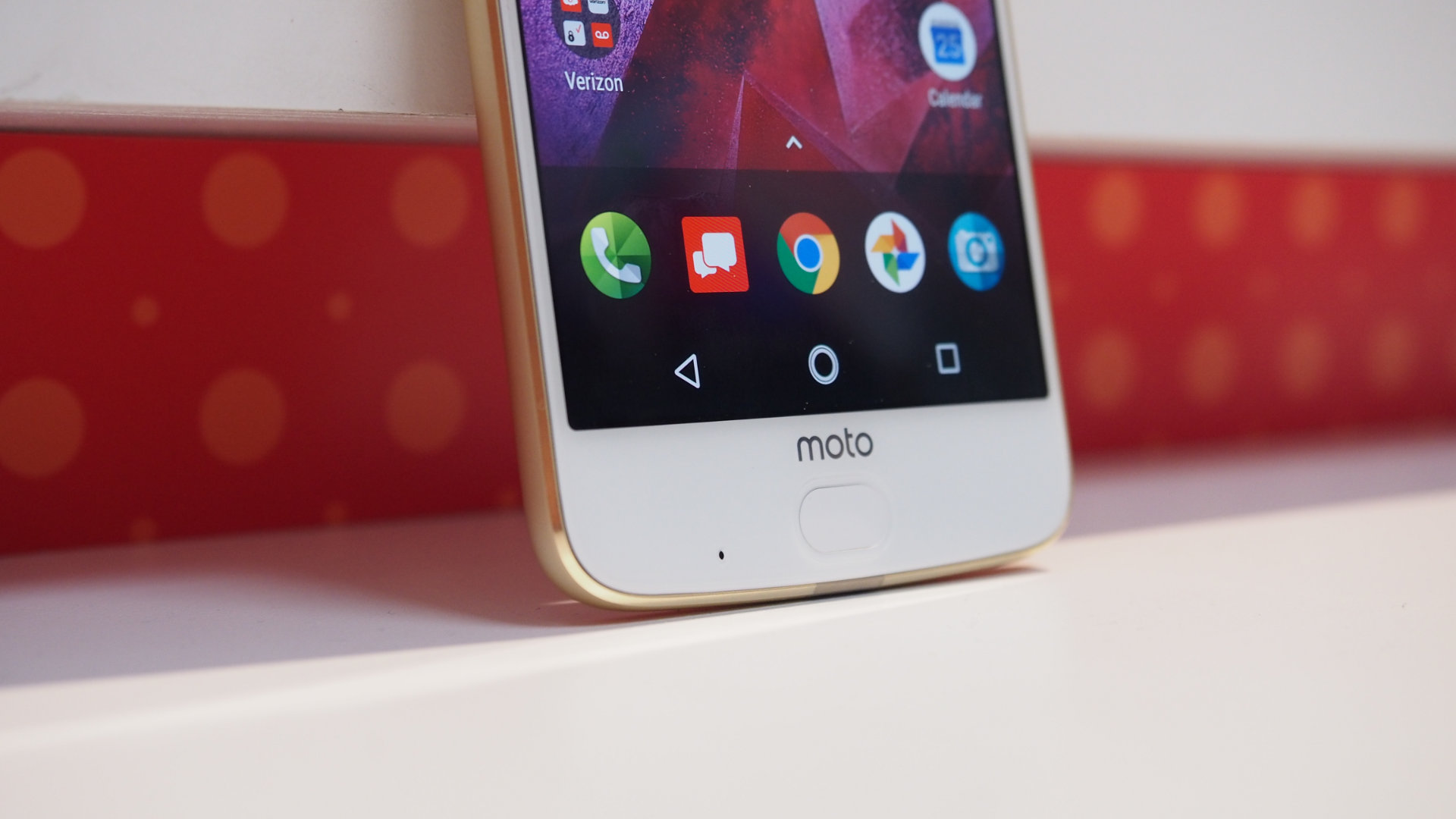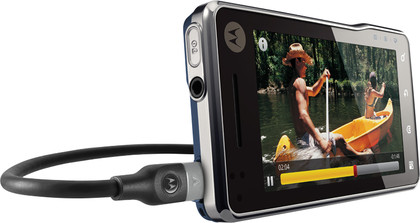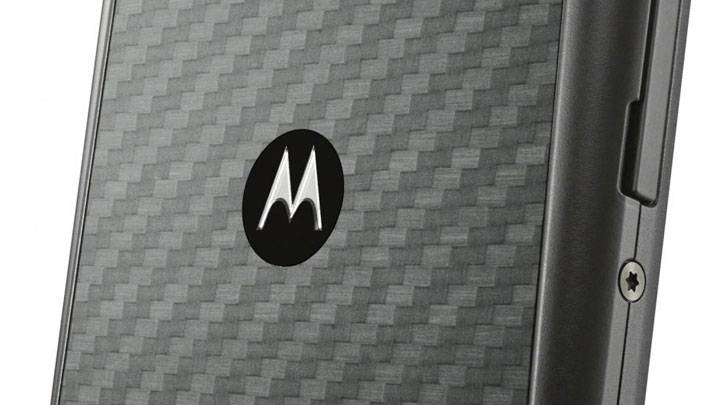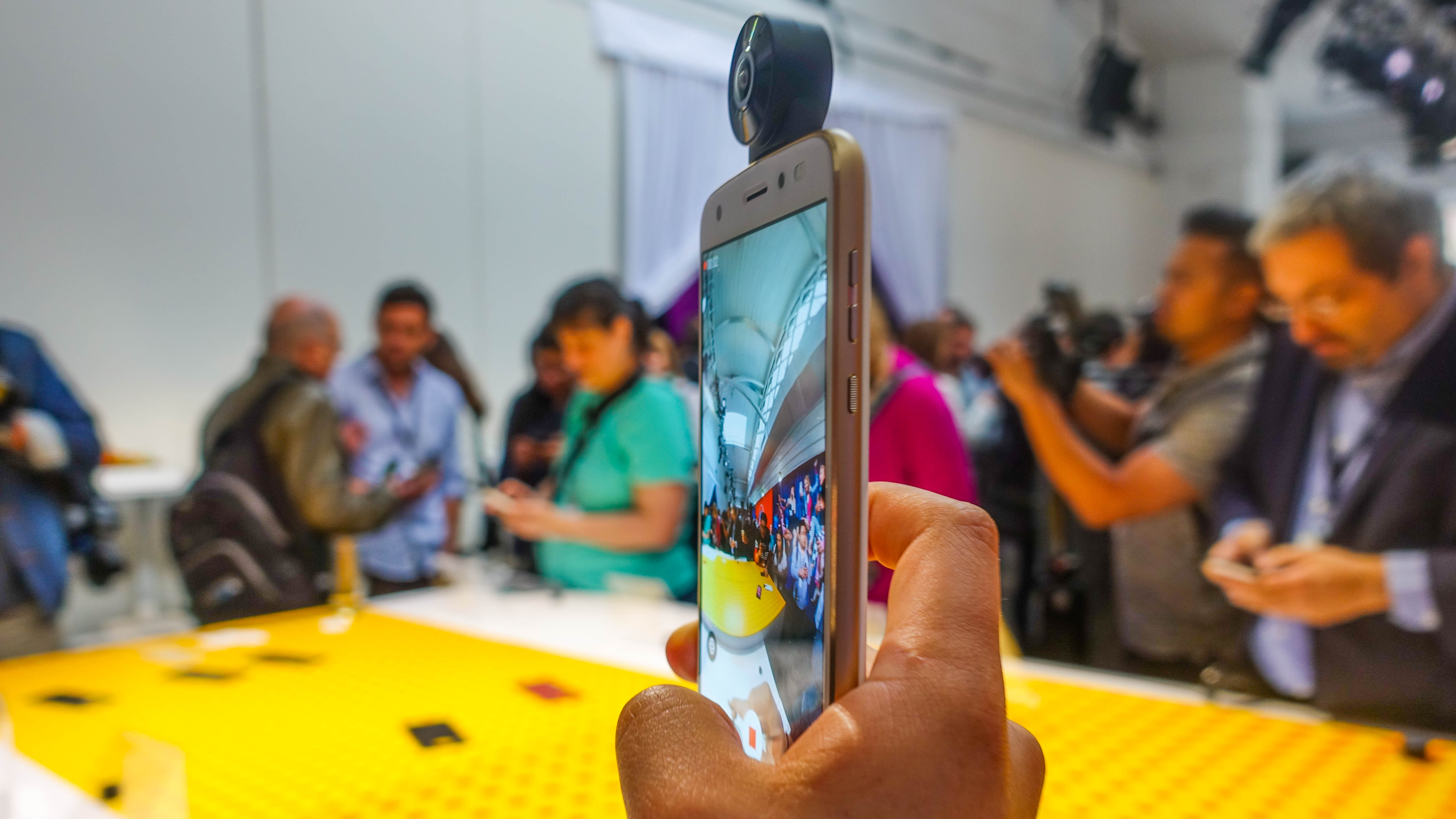Motorola is taking on Samsung and Apple by going back to the ‘90s

I remember watching films on TV in the late 1990s, with the advert breaks sponsored by Motorola.
‘HELLO MOTO’ croaked out the robotic voice 20 times a night as I tucked into a bag of chocolate treats. The peak for Motorola came when I was watching Austin Powers 3: Goldmember, which not only had the branding but a reference to a Moto phone within it.
‘Cristal, my Moto, a couple of bihatches, why not?’ rapped Dr Evil, even satire showing Motorola was a premium brand among the rich and famous.
That was a long time ago, before the smartphone juggernaut arrived and looked to have flattened the once-great brand, the name maintaining lustre but sales still slowly falling off, in the same way we ‘lost’ Nokia.
So when Motorola's execs told me recently that the company had aspirations of being the third biggest smartphone brand in the world - and even trying to overthrow Apple and Samsung in certain territories, it seemed like a laughable goal.
Anyone who owned a phone before the millennium would have seen Motorola sell millions of iconic phones that flipped, spun or hinged, and then struggle to repeat the trick in the nascent smartphone market.
They’d have watched as the Milestone, Atrix and Droid handsets came quietly onto the market, garnering small amounts of success but never matching the might of Apple and Samsung. Even rebooting the Razr name couldn’t resurrect the company.
Sign up for breaking news, reviews, opinion, top tech deals, and more.

The sale of the brand to Google and then Lenovo looked to be tearing the company asunder, with Google stripping out the patents and then flogging what was left to the Chinese brand of Lenovo, which seemed to be only buying the brand to promote its own name in the parts of the world where it didn’t have a foothold in the market.
Indeed, the new owner quickly slathered its branding over the phones – Motorola was dead, in favor of Moto by Lenovo.
Fans of Motorola, saddened at the thought of the once-great brand being devoured by another company. They would sit there, misty-eyed, thinking about their first Razr (and conveniently erasing the memory of almost-unusable user interface it offered).
It was a rather easy decision to say ‘Look, we have a brand that has a lot of potential,’ and we went for it.
Jan Huckfeldt
But now the Motorola name is back in use, with Lenovo deciding to double down on the brand it purchased for $3bn, rather than use it as a vehicle to promote its own name.
“I think there were considerations in the beginning, when Lenovo bought Motorola, that the idea was to have a brand which is complementary to the Lenovo footprint,” Motorola chief marketing officer Jan Huckfeldt told me in a round table discussion.
“The original thought was to drive a dual-brand strategy, the idea was to do this under the overall Lenovo brand umbrella and ultimately have Motorola and the Lenovo Vibe respectively two brands under the umbrella.”
Huckfeldt was hired in April last year, and immediately the decision was made to bring back a focus on the Motorola name, along with the iconic ‘Batwing’ logo that’s been synonymous with Moto for so many years.
The ‘Hello Moto’ catchphrase is also back, with Huckfeldt enthusiastically talking about “tapping the rich history of the brand” to remind users of more successful times.

“When I came in there were various management changes during April last year, and when I came into this position at the end of April, we looked at our situation and said ‘Look, if we really want to win in this market which is so competitive, we have to focus’,” said Huckfeldt.
“We have to have an absolute strategy focus. That’s when we made the decision that we’re going for one brand only, and we’re going to be doubling down on the brand which has the biggest potential in the mid-to-premium space.
“Lenovo was a well-regarded brand, but mainly at the lower end at the time. Motorola had the high residual brand awareness and equity across the world, and it’s known for premium phones.
“So it was a rather easy decision to say ‘Look, we have a brand that has a lot of potential,’ and we went for it.”
That means you probably won’t be seeing much Lenovo branding on smartphones in the coming months or years – and explains the rather insane-looking decision to remove the impressive Lenovo P2 from UK shelves just months after launch.
A reboot of a reboot
But Motorola needed to be preserved as a brand for more than just nostalgia - there’s a lot of ingenuity which has gone some way to shaping the smartphone market.
Under the stewardship of Google it revamped the budget smartphone game, with the Moto G showing how good a cheap handset could be in 2013.
The G range of phones still exists today, and while they’re more expensive and a mid-range devices now they’re still good handsets to recommend for those on something of a budget.
But more lately, Motorola’s creativity has centered on a new innovation – Moto Mods. A quick refresher for those who aren’t up to speed: these are modular accessories that clip magnetically onto the back of the new Moto Z family, and add in key new functions.
Be it a speaker, battery pack, wireless charging or even a projector, they add a new dimension to the phone that’s not available on any other handset right now.
Motorola’s product manager Jim Thiede told me the Moto Mods were being used extensively, and were helping to boost the popularity of the Moto Z. He said people were using the clip-on speaker, projector or Hasselblad ‘pro’ camera add-ons for up to 10 hours per week, and users who bought one Mod were often buying another.
In short, Motorola is trying to offer something different in the market – and that’s also clear in its refined marketing message.
We’ve heard a lot about the success of challenger brands in the smartphone market and their success – OnePlus and its low-cost, word-of-mouth-popularised handset being the poster child for those brands – and it's clear that Motorola is trying to position itself in the same way, with its recent ‘Skip the Sevens’ campaign – a reference to recent handsets from Apple and Samsung – a clear attempt to show it’s not copying what’s already on the market.
But does that mean Motorola can achieve its goal of becoming the third-biggest brand in the world? It’s got to compete with the might of Huawei, which is pouring an enormous amount of resource into developing and marketing new handsets at a range of price points, and is seeing high sales as a result.
And while the base Motorola phone might be positioned differently to the rest of the market, it’s similar at the core.
A powerful processor, high-res screen, thin body, and dual-sensor camera are features we’ve seen time and again, and although the Moto Z2 Force has a shatterproof screen, it’s hard to believe that’s a big enough draw to pull people away from just buying a Galaxy or iPhone.

But for those watching the smartphone industry, it’s hard not to want Motorola’s modular plans to succeed. The idea that we could have phones that simply are a snap away from becoming a gaming console, compact-rivalling camera or a portable multimedia experience is an appealing one indeed.
Motorola has shown some bravery in continuing with its Moto Mods strategy at a time when others are losing their nerve – LG absolutely panicking when its modular G5 didn’t sell well, and completely abandoning the strategy, shows how hard it can be to try something different in the smartphone market.
So will we be seeing another brand tie-in when the next Austin Powers movie hits our screens in 2025? If Motorola does manage that, we’ll be able to point to the time when it reached back to its past to push its idea of a smartphone of the future – and the more differentiation we can have in the market, the more exciting those smartphones will be.

Gareth has been part of the consumer technology world in a career spanning three decades. He started life as a staff writer on the fledgling TechRadar, and has grew with the site (primarily as phones, tablets and wearables editor) until becoming Global Editor in Chief in 2018. Gareth has written over 4,000 articles for TechRadar, has contributed expert insight to a number of other publications, chaired panels on zeitgeist technologies, presented at the Gadget Show Live as well as representing the brand on TV and radio for multiple channels including Sky, BBC, ITV and Al-Jazeera. Passionate about fitness, he can bore anyone rigid about stress management, sleep tracking, heart rate variance as well as bemoaning something about the latest iPhone, Galaxy or OLED TV.